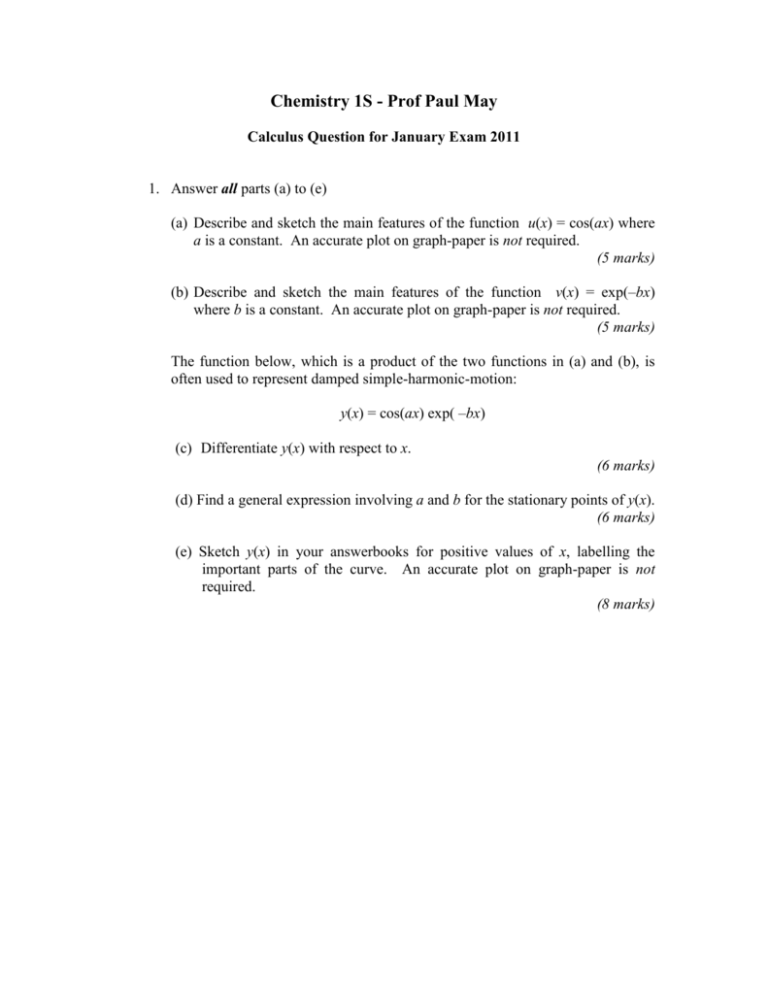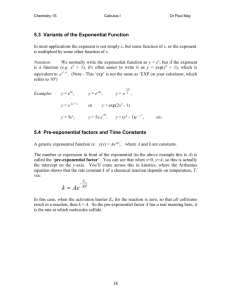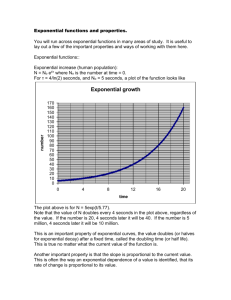1Sjanexam_11
advertisement

Chemistry 1S - Prof Paul May
Calculus Question for January Exam 2011
1. Answer all parts (a) to (e)
(a) Describe and sketch the main features of the function u(x) = cos(ax) where
a is a constant. An accurate plot on graph-paper is not required.
(5 marks)
(b) Describe and sketch the main features of the function v(x) = exp(–bx)
where b is a constant. An accurate plot on graph-paper is not required.
(5 marks)
The function below, which is a product of the two functions in (a) and (b), is
often used to represent damped simple-harmonic-motion:
y(x) = cos(ax) exp( –bx)
(c) Differentiate y(x) with respect to x.
(6 marks)
(d) Find a general expression involving a and b for the stationary points of y(x).
(6 marks)
(e) Sketch y(x) in your answerbooks for positive values of x, labelling the
important parts of the curve. An accurate plot on graph-paper is not
required.
(8 marks)
Answers
(a) u = cos(ax) is a cosine function, i.e. a function which repeats itself with a period
of 2/a. It cycles between a maximum amplitude of +1 at x=0 and x = 2/a, and a
minimum amplitude of -1 at x=/a. The function u = 0 at /2a and 3/2a.
(b) v = exp( -bx) is an exponential decay function, with decay constant = b. It has a
maximum value of 1 at x=0, and then drops away exponentially with increasing x
at a rate determined by the magnitude of b. The function only reaches 0 at x=∞.
(c) Product Rule:
d𝑦
d𝑥
= cos(ax)( -bexp(-bx)) + (exp( -bx)( -asin(ax)) [4 marks]
= exp( -bx) { -bcos(ax) – asin(ax) }
d𝑦
(d) Turning points occur when d𝑥 = 0, i.e. when
exp( -bx) { -bcos(ax) – asin(ax) } = 0
[2 marks for simplifying it]
This can occur if either exp( -bx) = 0, i.e. when x = ∞ (not a very useful solution)
or if -bcos(ax) – asin(ax) = 0,
–asin(ax) = bcos(ax)
tan(ax) = -b / a
i.e. for x values where x = (1/a) tan-1( -b/a)
(e) y(x) will be a combination of both a cosine function and an exponential decay.
The cosine function will be cyclic, as before, however instead of it oscillating
between +1 and -1, the multiplying exponential function decreases these values at
each cycle. Thus the curve is a ‘decaying cosine function’, with the period of
oscillation given, as before by 2/a, and the decay constant being b.









